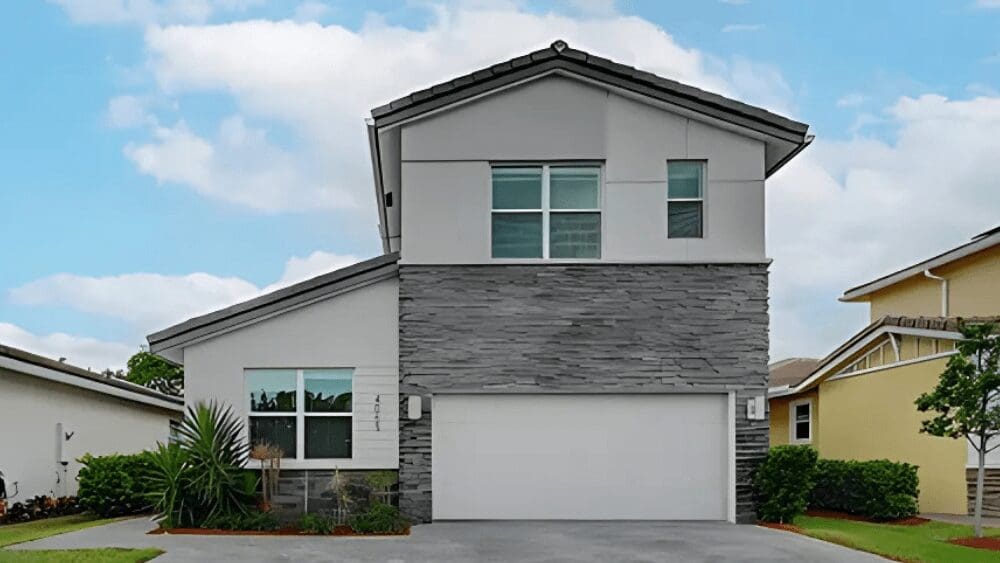
You’re ready to buy a house and are working hard to line all of your financial ducks up in a row. As you pull together the paperwork, you may be wondering if you’ll be required to provide your tax returns to purchase a home. The short answer is: maybe. Some types of loans do require you to provide your tax returns. But in many other cases, tax returns are not required. There are plenty of valid reasons why you may not want to provide your tax returns when purchasing a home. The first reason is privacy — you might not want your lending company to have access to all of your financial details, for example. Another reason is convenience. You may not have any idea where your tax returns are, and you don’t feel like jumping through hoops to track them down. No matter your situation, you have options. Here’s a step-by-step look at how to buy a house if you don’t want to provide tax returns to your lender. If you are employed full-time, and your salaried job is your only source of income, you can usually get away with providing your W-2s and a paycheck stub when applying for a loan — you won’t need to provide tax returns. That’s not true of every loan, though. If you are applying for an FHA loan, for example, you’ll have to provide your tax returns, no matter what. There are other circumstances when tax returns are required, too, such as if you own rental property, or if you are investing in the stock market and earn income from dividends. “You might have a salaried job, but if you’ve been investing in the stock market and have $10,000 to $30,000 each year in dividends income, we can in some cases use that income as additional income and help you qualify for more loan,” says Jessica Sanchez, Director of Mortgage Operations at HomeLight. If you are self-employed, retired, a contract employee, or if you have a side gig that provides income in addition to your full-time job, you’ll have to provide two years of tax returns to show proof of your entire income if you want to get the standard qualified mortgage, which is the type of mortgage that accounts for the majority of loans made today. It’s a mortgage that follows rules set out by the Consumer Finance Protection Bureau (CFPB) under the Dodd-Frank Act of 2011. These rules are designed to create a standard for documenting and verifying a borrower’s financials that creates a presumption that the borrower can afford the loan they have applied for. Qualified mortgages are great because they require a lender to fully verify certain factors to ensure you are likely to be able to afford your loan long-term. “The challenge with folks that are self-employed, or contract employees, is that your income might fluctuate from year to year and you can’t show a consistent amount earned for the two years a lender wants to see like a W-2 employee would,” says Sanchez. When you go to apply for a qualified mortgage, the lender will want to see tax returns as the best way to create an average picture of how much you earn every year. They use this to determine how much loan they think you can afford. But what can you do if you don’t want to track down those tax returns to apply for a qualified mortgage (QM)? That’s where the non-QM loan comes into play. In some unique instances, self-employed borrowers whose tax returns don’t accurately reflect their actual monthly income are eligible for a lower-document loan, which is referred to as a non-QM (qualified mortgage) loan. A non-QM loan does not meet the standards set by the CFPB for a qualified mortgage, as detailed above, but it still satisfies the spirit of the “Ability to Repay” rules under the Dodd-Frank Act. These rules, at their core, require a lender to verify and document that a borrower can afford a loan; they just aren’t as specific as to how that verification is satisfied as they are with the QM. This type of loan isn’t offered by every lender, and they have their own special rules that might vary from lender to lender. “They are specialty loans,” explains Sanchez, “where, if you are a self-employed individual and we as a lender can see income via bank statements [instead of with tax returns], you may be able to qualify.” The availability of non-QM loans may become a bit tricky during times of economic strain. For example, Sanchez warned, during the initial months of the coronavirus pandemic, the non-QM market slowed dramatically. Many lenders stopped making these loans for a period so they could reassess the risks in the market caused by the pandemic and associated economic shutdown. She also points out that non-QM loans generally come at a higher rate or cost. “They often cost more upfront, meaning they charge additional points and fees, and they also might charge a higher interest rate.” Lenders use tax returns or W-2s and pay stubs to confirm your income, but your credit score helps them evaluate how likely you are to pay your debts (and how much debt you have). No matter which type of loan you apply for, you must meet certain credit score requirements. An FHA loan, for example, generally requires a score of 580 to obtain a loan with a 3.5% down payment. VA (Veterans Affairs) loans typically require a credit score of 620 or higher. USDA loans look for a credit score of 640 or higher, and conventional loans require a score of about 685 for first-time homebuyers. Of course, those are credit score minimums in “normal” times. During the pandemic, many mortgage lenders are imposing overlays on loans, which means that minimum scores will likely be higher. The better your credit score, the better your rate and likelihood of qualifying for a loan, particularly a non-QM loan if you don’t want to share your tax returns. Any time you buy a home, you’ll need to provide a down payment. The bigger your down payment — and the more money you have in the bank overall — the better chance you’ll have at getting a loan. In 2019, the average down payment for first-time homebuyers was 6.7%, but if you can swing a 20% down payment, you won’t be required to purchase mortgage insurance (MI), and you’ll likely receive a better interest rate. Lending qualifications remain the same whether you’re self-employed or have a W-2, says Sanchez. “You don’t need to put more down or have a higher credit score” just because you’re self-employed, so long as you can meet the income documentation for a QM loan, which may require those tax returns. But if you’re looking at a non-QM loan so you don’t have to provide those tax returns, the minimum down payment and required asset reserves may be higher than with a QM loan. Maximizing your savings and credit score will help you get a better loan, no matter what your employment profile looks like. Before you buy a home, you should pay off as much of your debt as possible. Not only does paying off your debt increase your credit score, but lenders will also want to see that you have a low debt-to-income ratio. Your debt-to-income ratio is calculated by simply dividing all your monthly payments (debts) by your gross monthly income. An acceptable DTI will vary by lender and the type of loan you’re applying for, but a lower DTI is usually always beneficial to ensure a higher chance of approval and a lower rate. Whether you are a self-employed borrower or a salaried borrower, you’re going to have to show sufficient income to prove you can afford your loan. The difference will be what type of documentation you will need to provide. For a QM loan, “If you are a salaried employee, all we would need from you is a pay stub and a W-2. If you are a self-employed borrower, we’ll need two years of tax returns. If you are a business owner, be prepared to provide business bank statements, too. If you’re self-employed or a business owner and decide to go the Non-QM route so as not to need to provide your tax returns, you’ll still need those bank statements and asset statements so your lender can determine how much they think you can afford. It’s now time to get pre-approved for a loan. A loan pre-approval is a preliminary approval based on information you provide (either verified or unverified by the lender) that gives you an idea of how much you can afford and the terms by which the lender is willing to make you a loan. If you’re in the market for a non-QM loan, tell lenders that you want a bank statement or low-document loan and see what they have to offer. No matter which kind of loan you’re going for, make sure you talk to several lenders to ensure you’re getting the best terms possible. If you don’t already have one, you should be working with an agent to help you navigate this process. You may want to search for agents who have worked with self-employed clients before if you’re self-employed. While a real estate agent is not a lender and won’t be able to answer technical lending questions, your agent can point you toward qualified lenders that can answer all of your lending questions for you. Now that you’ve worked through the nitty-gritty of those lending requirements, it’s time for the fun part — shopping for the perfect house! While looking for a house can be a thrill, it can also quickly become overwhelming. One way to stay organized and ensure you’re buying a house that meets all of your needs is to keep a house-hunting checklist. If you haven’t already decided which loan and lender you’re going to use, now is the time to choose. Compare loan types, loan terms, and interest rates before settling on a loan and lender. Ask each lender to provide you with a Loan Estimate so you can easily compare rates and terms. Once you’ve found the perfect house that fits your budget, make an offer on the home. Your real estate agent will help you gather data on comparable homes so that you can submit a fair and competitive offer. Your agent will also help you determine if you want to include any contingencies in your offer and decide on the closing timeline. If you are buying your home with a non-QM loan, you might not be submitting tax returns, but you’ll have to provide other documents, such as bank statements, to your lender during the underwriting process. Because a non-QM loan isn’t the standard type of loan, you’ll want to make sure you’re staying in close touch with your agent and loan representative to ensure they have all of the documentation they need. Even if you’re purchasing a home with a qualified mortgage, it’s a good idea to regularly check in to make sure your application is moving along. And regardless of what sort of loan you apply for, it’s a real good idea to make sure you aren’t making any other major financial moves while your loan is in process. Any significant changes in your credit or financial position could put your loan approval and thereby your home at risk. Wait until your loan closes to make any changes or major purchases. Be patient, attentive to your lender and agent, and when the deal closes, you’re a homeowner!Step 1: Determine what kind of loan you want (and can get)
What’s a qualified mortgage loan?
What’s a non-qualified mortgage loan?
Step 2: Maximize your credit score
Step 3: Maximize your savings
Step 4: Pay off your debt
Step 5: Get your documentation together
Step 6: Get pre-approved for a loan
Step 7: Find a real estate agent
Step 8: Find your house
Step 9: Choose your loan and lender
Step 10: Make an offer on a home
Step 11: Stay in touch through closing



